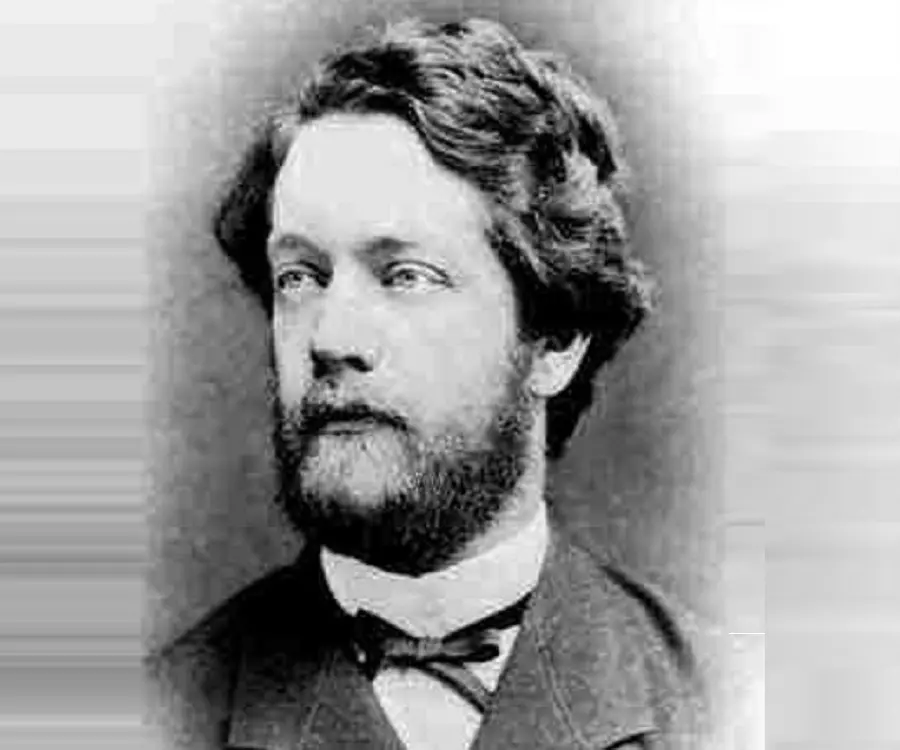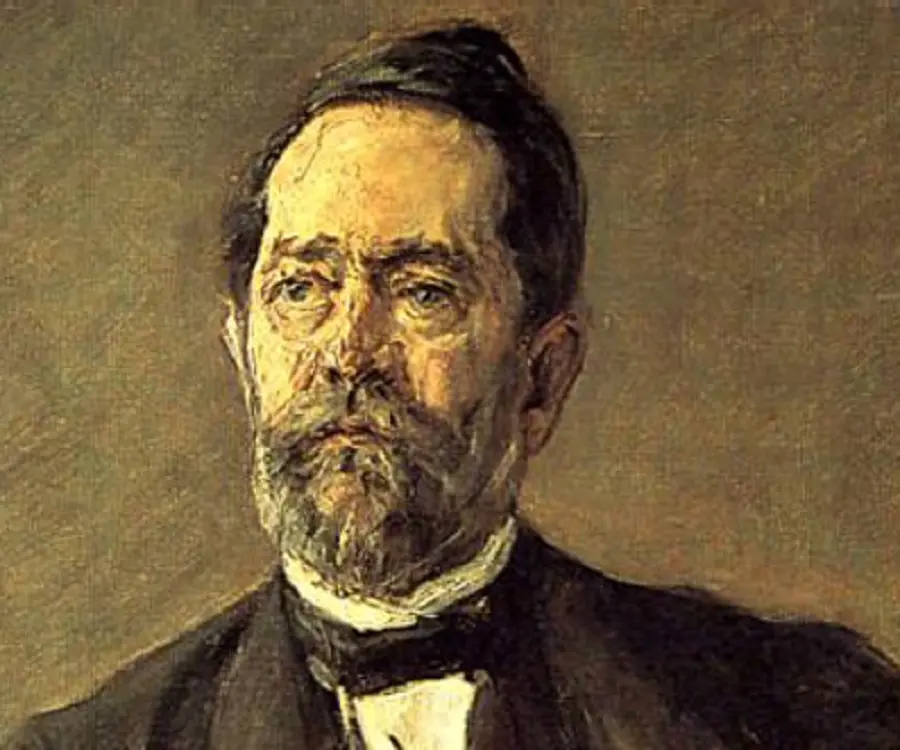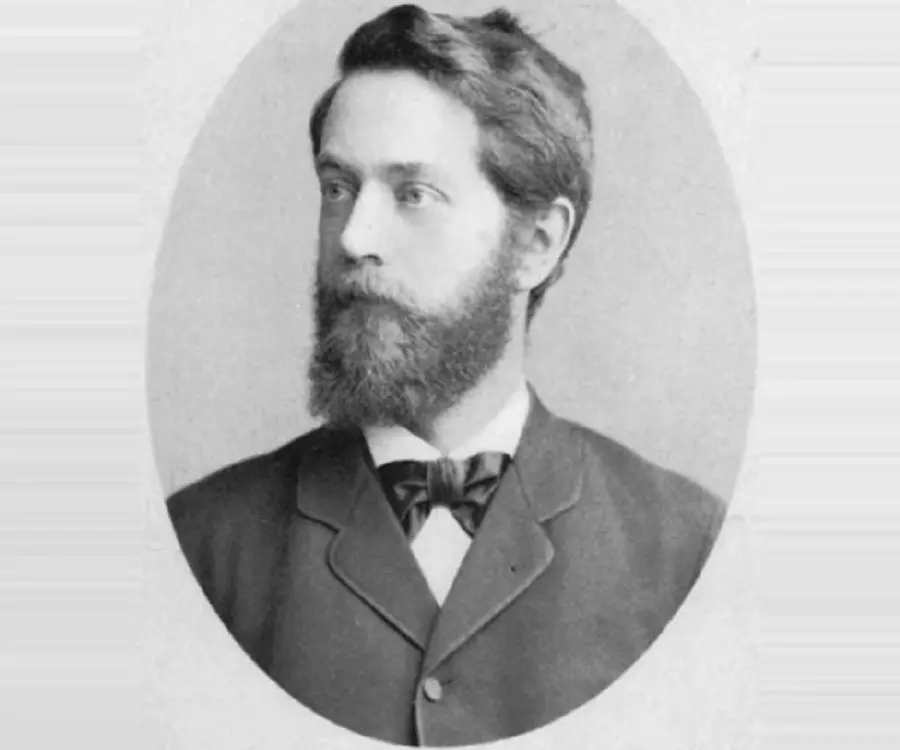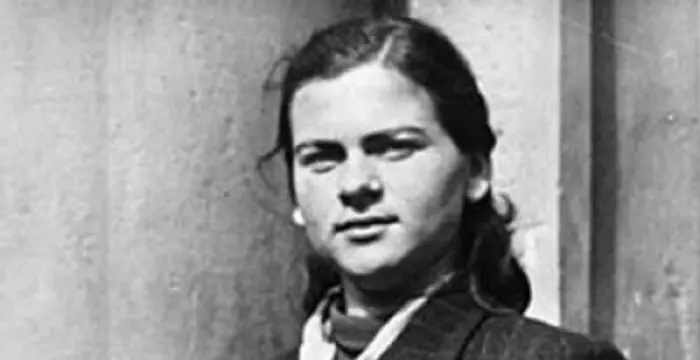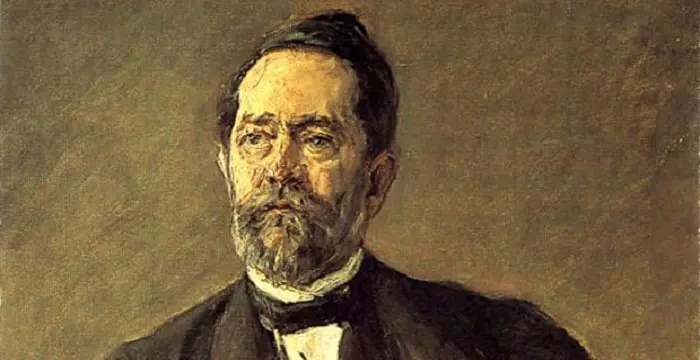
Felix Christian Klein - Mathematicians, Family and Personal Life
Felix Christian Klein's Personal Details
Felix Christian Klein was a German Mathematician known for his important works in non-Euclidean geometry
| Information | Detail |
|---|---|
| Birthday | April 25, 1849 |
| Died on | June 22, 1925 |
| Nationality | German |
| Famous | Scientists, Mathematicians |
| Spouses | Anne Hegel |
| Known as | Christian Felix Klein |
| Universities |
|
| Birth Place | Düsseldorf |
| Gender | Male |
| Father | Caspar Klein |
| Mother | Sophie Elise Klein |
| Sun Sign | Taurus |
| Born in | Düsseldorf |
| Famous as | Mathematician |
| Died at Age | 76 |
// Famous Scientists
Juliane Koepcke
Juliane Koepcke is a German-Peruvian biologist, who was the lone survivor among the 92 passengers and crew of the ill-fated LANSA Flight 508 that crashed in the Peruvian rainforest on 24 December 1971. Know more about her life in this biography.
Henry Cavendish
Henry Cavendish was a theoretical chemist and physicist, renowned for discovery of hydrogen and calculation of the mass of earth. To know more about his childhood, profile, timeline and career read on
Konstantin Tsiolkovsky
Konstantin Tsiolkovsky was a Russian rocket scientist and a pioneer of astronautics. This biography provides detailed information about his childhood, family, personal life, career, achievements, etc.
Felix Christian Klein's photo
Who is Felix Christian Klein?
Felix Christian Klein was a noted 19th century German mathematician known for his contribution to group theory, complex analysis, non-Euclidean geometry and for his creation of Erlangen Program. Born in Düsseldorf to Prussian parents, he received his education at the University of Bonn. Klein worked closely, first with the physicist Julius Plücker, and then with the mathematician Alfred Clebsch, before being appointed a Privatdozent at the University of Göttingen. Here, at the age of 22, he published two important papers on Euclidean and non-Euclidean geometry. At the age of 23, he became a full professor at University of Erlangen, initiating Erlanger program there. Later he held mathematics chair at Technische Hochschule in Munich and Leipzig University, producing number of important papers. However, he was never of sound health and in his early thirties, he suffered nervous breakdown, which hampered his research work to a very large extent. Thereafter, returning to the University of Göttingen, he began to teach a wide variety of courses. But very soon, his interest turned towards educational reform both at university and school level, devoting much of his energy towards it in his later years.
// Famous Mathematicians
Grigori Perelman
Grigori Perelman is a Russian mathematician who is best known for his contributions to Riemannian geometry and geometric topology. Check out this biography to know about his childhood, family life, achievements and fun facts about him.
Terence Tao
Terence Tao is an Australian- American mathematician who has contributed enormously to the field of mathematics. Check out this biography to know about his childhood, family life and achievements.
Isaac Newton
Isaac Newton was an English scientist and mathematician, who discovered gravitation and Newtonian Mechanics. Read this biography to find more on his life.
Childhood & Early Years
Felix Christian Klein was born on 25 April 1849 in Düsseldorf, at that time the capital city of Rhine Province under the Kingdom of Prussia, now the capital city of North Rhine-Westphalia state of Germany. Both his parents, Casper Klein and Sophie Elise Klein née Kayser, were Prussians.
Beginning his elementary education at home with his mother, he was enrolled at a private school at the age of six, studying there for two and half years. Later in 1857, he was shifted to the Gymnasium in Düsseldorf, from where he graduated in 1865.
Although traditionally gymnasiums paid more importance to the teachings of classics, the one he went to also laid equal stress on mathematics and science. Here under the guidance of several qualified teachers, he gained in-depth knowledge in mathematics, doing quite well in the final examination.
After graduating from the Gymnasium, he entered the University of Bonn in the winter semester of 1865-1866, wanting to become a physicist. Here he studied mathematics and natural sciences, attending ‘Seminar für die gesamten Naturwissenschaften’ consisting of physics, chemistry, geology, botany and zoology.
Although he earned distinction in botany and zoology he was especially good in physics. From the very beginning, his abilities in theoretical and experimental physics earned him praise from Julius Plücker, professor of mathematics and experimental physics.
In 1866, Felix Klein joined Plücker’s laboratory as his assistant. But by then, the professor’s interest had turned to geometry and Klein began to study mathematics with him. He was soon influenced by Plücker‘s analytical-geometric approach.
Although he continued to study natural sciences, from the winter semester of 1867-68, Klein started concentrating on mathematics. During this period, apart from attending Plücker‘s lectures, he also studied analytic geometry, number theory, mechanics, statics, differential equations, and calculus with Rudolf Lipschitz.
In December 1868, Klein received his doctoral degree from the University of Bonn, writing his thesis, entitled ‘Über die Transformation der allgemeinen Gleichung des zweiten Grades zwischen Linien-Koordinaten auf eine kanonische’ under Plücker’s supervision. In this thesis, he classified second degree line complexes using Weierstrass theory of elementary divisors.
At Göttingen
On 22 May 1868, before Klein received his doctoral degree, Julius Plücker passed away, leaving his work on the foundations of line geometry, ‘Neue Géometrie des Raumes’ incomplete. Klein, being his closest assistant, was asked to complete the work by Alfred Clebsch, Professor of Mathematics at the University of Göttingen.
In January 1869, Felix Christian Klein left for University of Göttingen, studying there with Alfred Clebsch until August 1869. Thereafter, he moved to Berlin, where he studied until April 1870, attending Mathematisches Seminar and lectures by Kronecker. Here, he also met Norwegian mathematician Sophus Lie, and formed a close partnership with him.
Working together, Klein and Lie discovered the fundamental properties of the asymptotic lines on the Kummer surface. Later they worked on W-curves, curves invariant under a group of projective transformations.
In April 1870, Klein and Lie left for Paris, intending to study recent developments in French mathematics. But the Franco Prussian War, which broke out in July 1870, forced Klein to abandon the idea.
Volunteering for the army, he served as the medical orderly in the Prussian Army; but very shortly, on being infected with typhus, he was released from the army. While recovering from his ailments, he started preparing for his habilitation, obtaining his degree in January 1871.
Early Career
In early 1871, soon after receiving his degree, Felix Christian Klein began his career as a Privatdozent at the University of Göttingen. All along, he continued with his research work, publishing two important papers on Euclidean and non-Euclidean geometry.
In October 1872, on Clebsch’s recommendation, Klein was appointed professor of mathematics at the University of Erlangen, Bavaria. Although he was only 23 years old, he had by then become known for his publications on geometry.
Traditionally, a professor, on assuming his chair, had to submit a scientific paper. Going by the custom, he published ‘Vergleichende Betrachtungen über neuere geometrische Forschungen’, which was the continuation of his earlier work on Euclidean geometry. The paper led to the formation of ‘Erlangen Program’.
To his disappointment, Klein had very few students at Erlangen. That is mainly because mathematics was being just developed in Bavaria and therefore not many students were interested in it. However, the period was not totally uneventful.
Clebsch, who was not only the cofounder, but also one of the editors of a mathematical journal called ‘Mathematische Annalen’, passed away a month after Klein joined Erlangen. In 1874, Klein entered the journal’s editorial team, subsequently overtaking the leadership of the Clebsch School.
In 1875, he moved to Munich, where he was offered a chair at Technische Hochschule. Here, he had considerable number of excellent students, most of whom studied mathematics as a service subject. In addition to them, he also had to look after a few students, who specialized in mathematics.
Klein remained at Technische Hochschule for five years, making sure that his students had a solid foundation in mathematics. His ability to teach was fully developed during this period.
In 1880, Klein moved to Leipzig University as the Professor of Geometry. Here, he started undertaking systematic improvement of mathematical studies. He also had a separate building built for mathematics. Apart from lecture halls and a specialized library, it had separate rooms for the Mathematisches Seminar.
Sometime in early 1880s, he started working intensely on elliptic functions. In this, he entered a race with Henri Poincare, who was also working on the same subject, each trying to outdo the other.
In 1882, he published his first paper on the subject, ‘Ueber Riemann's Theorie der Algebraischen Functionen und ihre Integrale’. But in autumn of 1882, he suffered a nervous breakdown, requiring long rest. 1883-1884, was spent in great depression, unable to work.
In 1884, he managed to publish his well-known work, ‘Vorlesungen über das Ikosaeder und die Auflösung der Gleichungen vom 5ten Grade’ (Lectures on the Ikosahedron; and the Solution of Equations of the Fifth Degree). But by then Poincare was well ahead of him.
Although Klein realized that he could never catch up with Poincare he continued to carry on fruitful research on the theory of functions until 1890s. But very soon, he turned his attention to educational reform.
Back to Göttingen
In 1886, Felix Christian Klein moved to Göttingen University, accepting the chair of mathematics, remaining there until his retirement in 1913. Here he taught a wide variety of courses, specializing on the interface between mathematics and physics, such as mechanics and potential theory. Concurrently, he also undertook many administrative duties.
In Göttingen, Klein established a mathematical research centre, which over the time became a model for such centers throughout the world. He also introduced weekly discussion meetings and following the Leipzig pattern, built a mathematical reading room with a mathematical library.
Although he was on the editorial team of ‘Mathematische Annalen’ since 1874, he now began to take more active interest in it. He set up a small team of editors who met regularly and all decisions were taken democratically.
Under his leadership, the journal began to rival and subsequently surpassed ‘Journal für die reine und angewandte Mathematik’, commonly known as ‘Crelle’s Journal’, published from the University of Berlin. In reality, the two journals represented two views, one of the Berlin School and other of the Clebsch School.
In 1893, Klein traveled to the United States of America to attend International Mathematical Congress, held in Chicago as part of the World's Columbian Exposition. Here he was one of the key speakers.
Also from 1893, thanks to Klein’s effort, Göttingen began to admit women. Grace Chisholm Young, the first women to receive her doctoral degree in Germany was one of his students. She wrote her doctoral thesis under his guidance, receiving her degree in 1895.
Also in 1895, Klein was chosen to supervise ‘Encyklopädie der mathematischen Wissenschaften mit Einschluss iher Anwendungen (“Encyclopedia of Pure and Applied Mathematics”). In the same year, he was able to persuade David Hilbert to join his research team at Göttingen, appointing him to the other chair in mathematics.
From 1896 onwards, Klein and Hilbert worked closely together to turn Göttingen into a pilgrimage center for mathematicians from all over the world. Many new positions were created among which most important was the Chair for Applied Mathematics (1904).
Wishing to take mathematics to a more practical level, he now set out to redefine the subject so that it would be compatible with the curricula of the technical schools. He also forged an alliance with the leading German industrialists, establishing Göttinger Vereinigung für angewandte Physik in 1898. ,
From 1900, he began working towards improving teaching skills in mathematics at school level, establishing summer schools for in-service-training for mathematics teachers. He also recommended that rudimentary differential and integral calculus and the function concept should be introduced in secondary schools.
Along with technical papers, he wrote number of books on elementary mathematics. Among them, ‘Elementarmathematik vom höheren Standpunkte aus (Elementary Mathematics from an Advanced Standpoint), published in 1908 in three volumes, became very popular and serves as a model even today.
In 1908, he attended Internationale Mathematische Unterichtskommission (IMUK) at Rome, where he was elected the first President of the organization. Under his guidance, it became an agent for curricular change and its German chapter began to publish several volumes of books on the teaching of mathematics for every levels.
To meet the four-year deadline set by IMUK, Klein worked very hard, falling ill sometime in 1911, being forced to stay at a sanatorium in Hahnenklee in the Harz Mountains in 1911-1912. However, he did not stop working, managing to have meetings both with his German assistants and foreign colleagues.
By 1913, Klein’s health had deteriorated so much that he was forced resign from his post at the University of Göttingen. However, he continued to teach at home throughout the First World War, concurrently working for the IMUK until it was officially dissolved in 1920.
Major Works
Felix Christian Klein is best remembered for his creation of ‘Erlanger Program’. Although non-Euclidean geometries had been evolved by then, there was no way to determine their hierarchy and relationships. Erlanger Program created in 1872, was an important step in that direction, characterizing geometries based on group theory and projective geometry.
His other major contribution to mathematics was his work on functional theory. In 1882, he presented a paper on the basis of treating functional theory in the geometric way by connecting conformal mappings and potential theory. Using fluid dynamics, he was able to incorporate physical ideas into his work.
Klein worked on solving general equations of the fifth degree by using transcendental methods. He applied views of Charles Hermite and Leopold Kronecker into his methods and solved the problems with the icosahedron group. This research led him to work on elliptic modular functions.
Klein connected geometric and algebraic results in order to develop the theory of automorphic functions, which he published in his book on icosahedron, in 1884.
Awards & Achievements
In 1893, Felix Christian Klein received De Morgan Medal for his outstanding contribution to mathematics.
In 1912, he was awarded with Copley Medal for “his researches in mathematics”.
In 1914, he received the first Ackermann–Teubner Memorial Award for his analytical works in mathematics.
He was elected a member of the Royal Society in 1885.
Personal Life & Legacy
In 1875, Klein married Anna Maria Carolina Hegel, the granddaughter of the noted philosopher, Georg Wilhelm Friedrich Hegel. The couple had three children; a son named Otto Klein and two daughters, Luise Süchtig nee Klein and Elisabeth Steiger nee Klein. According to some biographers, he had another daughter, whose name remains unknown.
Klein died on 22 June 1925 in Göttingen, at the age of 76.
Concepts like Klein bottle and Beltrami–Klein model continue to carry his legacy.
// Famous German peoples
Jordan Carver
Jordan Carver is a famous German model. Let’s take a close look at her personal life, including her age, career, net worth, achievements and some fun facts.
Jürgen Klopp
Jürgen Klopp is a German football manager, and a former professional football player. Check out this biography to know more about his childhood, family, personal life, etc.
Irma Grese
Irma Grese was a notorious German Nazi concentration camp guard during the Second World War. This biography profiles her childhood, life, horrifying acts, death and other facts.
Felix Christian Klein's awards
| Year | Name | Award |
|---|---|---|
Other | ||
| 0 | 1893 - De Morgan Medal | |
| 0 | 1912 - Copley medal | |
Felix Christian Klein biography timelines
- // 25th Apr 1849Felix Christian Klein was born on 25 April 1849 in Düsseldorf, at that time the capital city of Rhine Province under the Kingdom of Prussia, now the capital city of North Rhine-Westphalia state of Germany. Both his parents, Casper Klein and Sophie Elise Klein née Kayser, were Prussians.
- // 1857 To 1865Beginning his elementary education at home with his mother, he was enrolled at a private school at the age of six, studying there for two and half years. Later in 1857, he was shifted to the Gymnasium in Düsseldorf, from where he graduated in 1865.
- // 1865 To 1866After graduating from the Gymnasium, he entered the University of Bonn in the winter semester of 1865-1866, wanting to become a physicist. Here he studied mathematics and natural sciences, attending ‘Seminar für die gesamten Naturwissenschaften’ consisting of physics, chemistry, geology, botany and zoology.
- // 1866In 1866, Felix Klein joined Plücker’s laboratory as his assistant. But by then, the professor’s interest had turned to geometry and Klein began to study mathematics with him. He was soon influenced by Plücker‘s analytical-geometric approach.
- // 1867Although he continued to study natural sciences, from the winter semester of 1867-68, Klein started concentrating on mathematics. During this period, apart from attending Plücker‘s lectures, he also studied analytic geometry, number theory, mechanics, statics, differential equations, and calculus with Rudolf Lipschitz.
- // 22nd May 1868On 22 May 1868, before Klein received his doctoral degree, Julius Plücker passed away, leaving his work on the foundations of line geometry, ‘Neue Géometrie des Raumes’ incomplete. Klein, being his closest assistant, was asked to complete the work by Alfred Clebsch, Professor of Mathematics at the University of Göttingen.
- // Dec 1868In December 1868, Klein received his doctoral degree from the University of Bonn, writing his thesis, entitled ‘Über die Transformation der allgemeinen Gleichung des zweiten Grades zwischen Linien-Koordinaten auf eine kanonische’ under Plücker’s supervision. In this thesis, he classified second degree line complexes using Weierstrass theory of elementary divisors.
- // Jul 1870In April 1870, Klein and Lie left for Paris, intending to study recent developments in French mathematics. But the Franco Prussian War, which broke out in July 1870, forced Klein to abandon the idea.
- // 1871In early 1871, soon after receiving his degree, Felix Christian Klein began his career as a Privatdozent at the University of Göttingen. All along, he continued with his research work, publishing two important papers on Euclidean and non-Euclidean geometry.
- // Jan 1871Volunteering for the army, he served as the medical orderly in the Prussian Army; but very shortly, on being infected with typhus, he was released from the army. While recovering from his ailments, he started preparing for his habilitation, obtaining his degree in January 1871.
- // 1872Felix Christian Klein is best remembered for his creation of ‘Erlanger Program’. Although non-Euclidean geometries had been evolved by then, there was no way to determine their hierarchy and relationships. Erlanger Program created in 1872, was an important step in that direction, characterizing geometries based on group theory and projective geometry.
- // Oct 1872In October 1872, on Clebsch’s recommendation, Klein was appointed professor of mathematics at the University of Erlangen, Bavaria. Although he was only 23 years old, he had by then become known for his publications on geometry.
- // 1874Clebsch, who was not only the cofounder, but also one of the editors of a mathematical journal called ‘Mathematische Annalen’, passed away a month after Klein joined Erlangen. In 1874, Klein entered the journal’s editorial team, subsequently overtaking the leadership of the Clebsch School.
- // 1874Although he was on the editorial team of ‘Mathematische Annalen’ since 1874, he now began to take more active interest in it. He set up a small team of editors who met regularly and all decisions were taken democratically.
- // 1875In 1875, he moved to Munich, where he was offered a chair at Technische Hochschule. Here, he had considerable number of excellent students, most of whom studied mathematics as a service subject. In addition to them, he also had to look after a few students, who specialized in mathematics.
- // 1875In 1875, Klein married Anna Maria Carolina Hegel, the granddaughter of the noted philosopher, Georg Wilhelm Friedrich Hegel. The couple had three children; a son named Otto Klein and two daughters, Luise Süchtig nee Klein and Elisabeth Steiger nee Klein. According to some biographers, he had another daughter, whose name remains unknown.
- // 1880In 1880, Klein moved to Leipzig University as the Professor of Geometry. Here, he started undertaking systematic improvement of mathematical studies. He also had a separate building built for mathematics. Apart from lecture halls and a specialized library, it had separate rooms for the Mathematisches Seminar.
- // 1882His other major contribution to mathematics was his work on functional theory. In 1882, he presented a paper on the basis of treating functional theory in the geometric way by connecting conformal mappings and potential theory. Using fluid dynamics, he was able to incorporate physical ideas into his work.
- // 1884In 1884, he managed to publish his well-known work, ‘Vorlesungen über das Ikosaeder und die Auflösung der Gleichungen vom 5ten Grade’ (Lectures on the Ikosahedron; and the Solution of Equations of the Fifth Degree). But by then Poincare was well ahead of him.
- // 1884Klein connected geometric and algebraic results in order to develop the theory of automorphic functions, which he published in his book on icosahedron, in 1884.
- // 1885He was elected a member of the Royal Society in 1885.
- // 1886 To 1913In 1886, Felix Christian Klein moved to Göttingen University, accepting the chair of mathematics, remaining there until his retirement in 1913. Here he taught a wide variety of courses, specializing on the interface between mathematics and physics, such as mechanics and potential theory. Concurrently, he also undertook many administrative duties.
- // 1893In 1893, Klein traveled to the United States of America to attend International Mathematical Congress, held in Chicago as part of the World's Columbian Exposition. Here he was one of the key speakers.
- // 1893 To 1895Also from 1893, thanks to Klein’s effort, Göttingen began to admit women. Grace Chisholm Young, the first women to receive her doctoral degree in Germany was one of his students. She wrote her doctoral thesis under his guidance, receiving her degree in 1895.
- // 1893In 1893, Felix Christian Klein received De Morgan Medal for his outstanding contribution to mathematics.
- // 1895Also in 1895, Klein was chosen to supervise ‘Encyklopädie der mathematischen Wissenschaften mit Einschluss iher Anwendungen (“Encyclopedia of Pure and Applied Mathematics”). In the same year, he was able to persuade David Hilbert to join his research team at Göttingen, appointing him to the other chair in mathematics.
- // 1896 To 1904From 1896 onwards, Klein and Hilbert worked closely together to turn Göttingen into a pilgrimage center for mathematicians from all over the world. Many new positions were created among which most important was the Chair for Applied Mathematics (1904).
- // 1898Wishing to take mathematics to a more practical level, he now set out to redefine the subject so that it would be compatible with the curricula of the technical schools. He also forged an alliance with the leading German industrialists, establishing Göttinger Vereinigung für angewandte Physik in 1898. ,
- // 1900From 1900, he began working towards improving teaching skills in mathematics at school level, establishing summer schools for in-service-training for mathematics teachers. He also recommended that rudimentary differential and integral calculus and the function concept should be introduced in secondary schools.
- // 1908Along with technical papers, he wrote number of books on elementary mathematics. Among them, ‘Elementarmathematik vom höheren Standpunkte aus (Elementary Mathematics from an Advanced Standpoint), published in 1908 in three volumes, became very popular and serves as a model even today.
- // 1908In 1908, he attended Internationale Mathematische Unterichtskommission (IMUK) at Rome, where he was elected the first President of the organization. Under his guidance, it became an agent for curricular change and its German chapter began to publish several volumes of books on the teaching of mathematics for every levels.
- // 1912In 1912, he was awarded with Copley Medal for “his researches in mathematics”.
- // 1913 To 1920By 1913, Klein’s health had deteriorated so much that he was forced resign from his post at the University of Göttingen. However, he continued to teach at home throughout the First World War, concurrently working for the IMUK until it was officially dissolved in 1920.
- // 1914In 1914, he received the first Ackermann–Teubner Memorial Award for his analytical works in mathematics.
- // 22nd Jun 1925Klein died on 22 June 1925 in Göttingen, at the age of 76.
// Famous Taurus Celebrities peoples
Jason Simpson
Jason Simpson is the son of former NFL running back, broadcaster and actor O. J. Simpson. Check out this biography to know about his childhood, family, life, and little known facts about him.
Sophie Reade
Sophie Victoria Reade is a British model and reality show star. Let’s take a look at her family and personal life, including her age, birthday, boyfriends, and some interesting facts.
ASMR Aspen
ASMR Aspen is an American YouTuber. Check out this biography to know about her birthday, childhood, family life, achievements and fun facts about her.
Bertil Gotthard Ohlin
Bertil Gotthard Ohlin was a famous Swedish economist. This biography profiles his childhood, family life & achievements.
Josh Temple
Check out all that you wanted to know about Josh Temple (Slogoman), the famous British YouTube Personality; his birthday, his family and personal life, his girlfriends, fun trivia facts and more.
Aidan Prince
Aidan Prince is an American dancer, actor and vlogger. Let’s have a look at his family and personal life including age, date of birth, net worth, and fun facts.
Felix Christian Klein's FAQ
What is Felix Christian Klein birthday?
Felix Christian Klein was born at 1849-04-25
When was Felix Christian Klein died?
Felix Christian Klein was died at 1925-06-22
Where was Felix Christian Klein died?
Felix Christian Klein was died in Göttingen
Which age was Felix Christian Klein died?
Felix Christian Klein was died at age 76
Where is Felix Christian Klein's birth place?
Felix Christian Klein was born in Düsseldorf
What is Felix Christian Klein nationalities?
Felix Christian Klein's nationalities is German
Who is Felix Christian Klein spouses?
Felix Christian Klein's spouses is Anne Hegel
What was Felix Christian Klein universities?
Felix Christian Klein studied at Rheinische Friedrich-Wilhelms-Universität Bonn
Who is Felix Christian Klein's father?
Felix Christian Klein's father is Caspar Klein
Who is Felix Christian Klein's mother?
Felix Christian Klein's mother is Sophie Elise Klein
What is Felix Christian Klein's sun sign?
Felix Christian Klein is Taurus
How famous is Felix Christian Klein?
Felix Christian Klein is famouse as Mathematician



